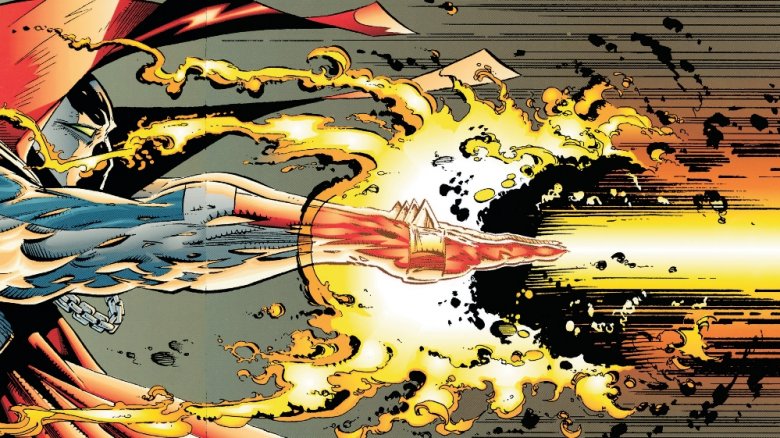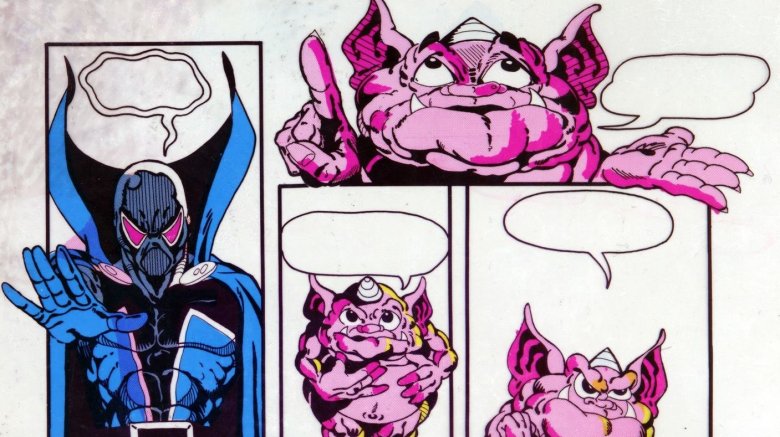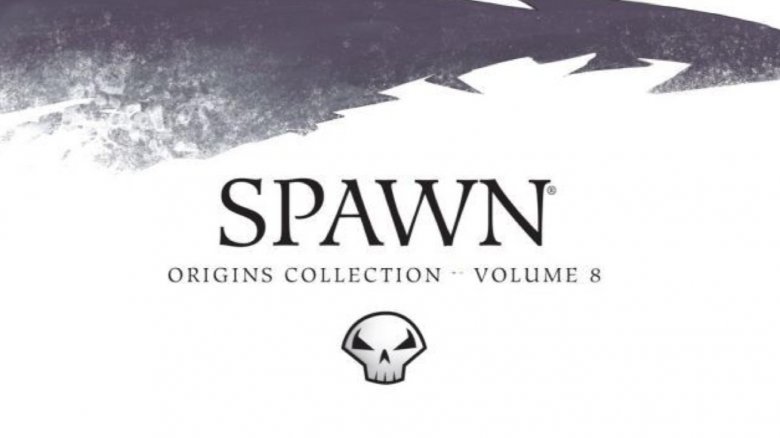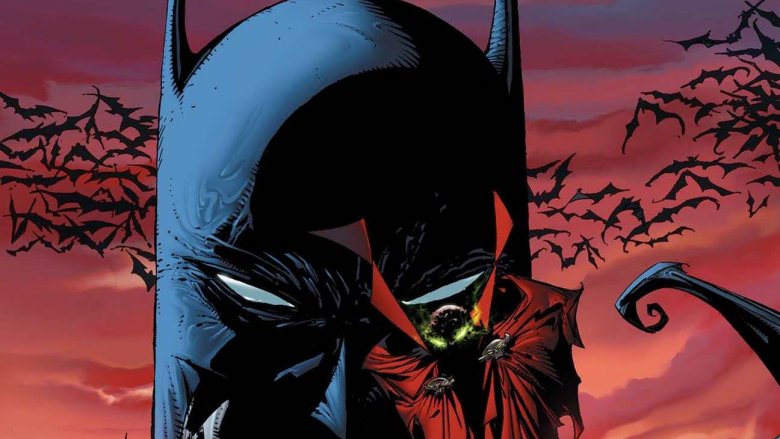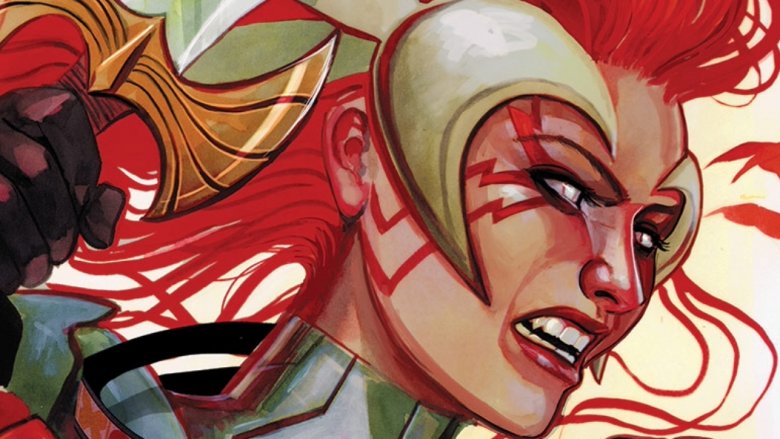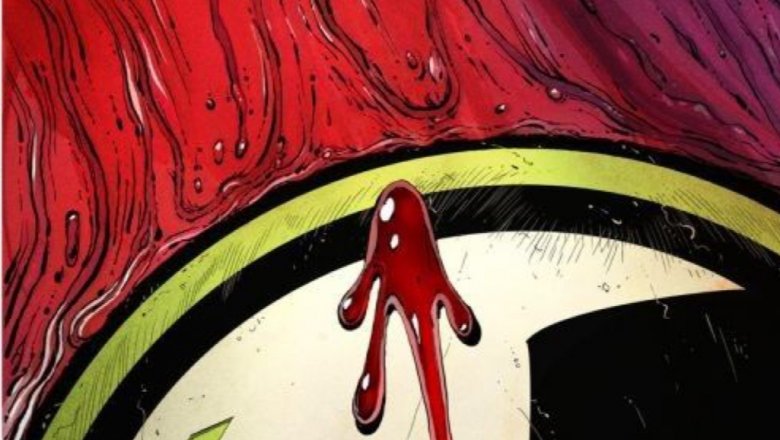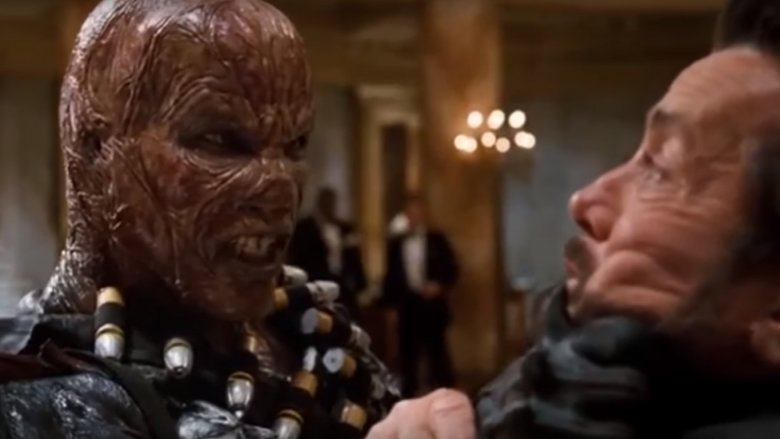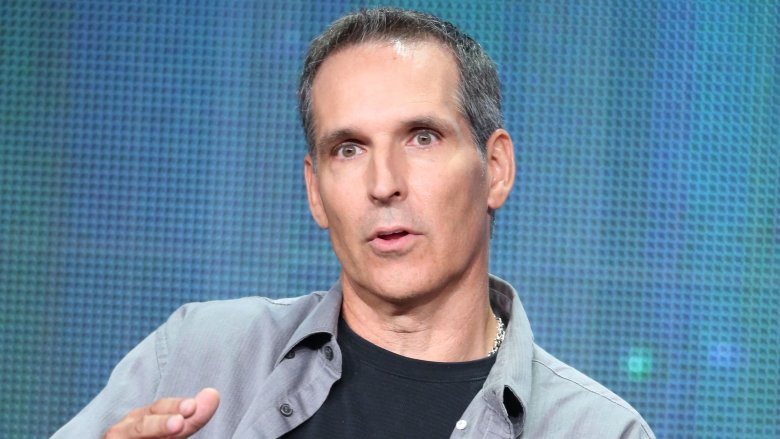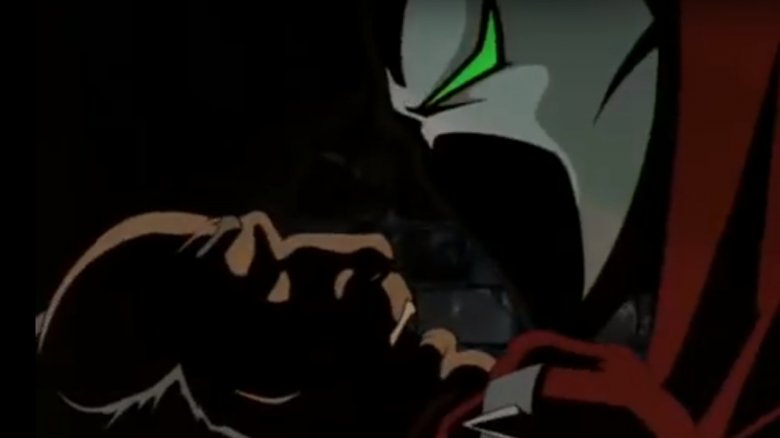The Untold Truth Of Spawn
In 1992, fed up with the work-for-hire policies of Marvel Comics and its rival DC, Todd McFarlane and other high profile illustrators working for the Big Two defected and formed Image Comics. Unlike Marvel or DC, Image offered its creators all the rights to its characters. If someone wanted to make big money bringing The Walking Dead to television, they didn't talk to an Image Editor-in-Chief or an Image Creative Director: they had to go right to the source, creator Robert Kirkman. And that's where the royalties went, too.
Todd McFarlane's Spawn — about a black ops soldier killed in action and resurrected as a supernatural warrior meant to be serving the will of Hell — quickly became Image's most successful title. While McFarlane will tell you he's an artist first and a businessman second, he boasts at least enough business savvy to have turned Spawn into its own media empire. Spawn comics birthed numerous spin-offs, featured in video games, an animated HBO series that was the first of its type, a live-action movie released in the late '90s, a new live-action reboot that will be written and directed by McFarlane himself, and some fairly public legal battles leading to — among other things — a character who first appeared in Spawn finding herself a favorite in the pages of Marvel Comics.
Here are some stories about the character and his comic you might not have heard of.
So many powers
If you don't know much about Spawn other than that he's a comic book superhero, you might naturally ask, "What powers does he have?"
The thing is, if you really want a succinct answer, you might be better off asking, "What powers doesn't he have?"
Spawn has displayed an impressive array of super powers. He's got the enhanced strength and durability you might come to expect as prerequisite for just about any superhero. As early as his first full-pitched battle with Violator in Spawn #4 he was blasting various yellow and green glowy stuff out of his hands, he was reanimating his limbs, and he was surviving the destruction of his internal organs. Later stories had the Hellspawn teleporting through shadows, healing others' wounds, resurrecting the dead, stopping time, breathing fire, drawing power from worms, flying, and plenty of other wild power displays.
It's enough to make you wonder exactly how there could be anything out there that could threaten Spawn enough to keep readers' interest. But with the comic book Spawn going strong after 25 years and another live-action film about to be made, it doesn't seem his Swiss Army knife collection of powers has hurt his appeal.
Spawn's Sweet Sixteen
According to McFarlane, when he and other prominent comic book artists formed Image and started talking about what titles they wanted to put out, McFarlane didn't have to think long. He knew exactly what he wanted to do. He claimed he'd first drawn Spawn in 1977 when he was 16 years old, and that the character had been in the back of his mind ever since. Spawn was already waiting in the wings, waiting for Image Comics to help him come to life (or undeath, depending on how you look at it).
If there was ever any room for doubt about his story, McFarlane just about proved it late October of 2017 when he posted what he said was one of his first drawings of Spawn on Facebook. Spawn appears with a small, more cartoonish character with a single horn coming out of its head. Spawn's coloring was different, and on the Facebook post McFarlane said he originally envisioned as being from space rather than Hell.
Spawn goes digital
By helping to form Image Comics and by showing how, without the support of a big corporation like Disney or Time Warner, you can turn a single character into a media gold mine, you could argue Todd McFarlane spent a lot of time on the comic industry's razor's edge. Which is why it's so surprising that when it came to digital publishing, he was one of the last to utilize it.
McFarlane told the Washington Post that holding off from digital publishing was McFarlane's way of staying loyal to brick-and-mortar comic book shops. Retailers felt threatened and betrayed by digital publishing, he said, and so kept Spawn in the shops and off the tablets.
But as Spawn's sales decreased and the rest of the comics industry seemed to be surviving the digital age, McFarlane became what he called, "the last holdout." He made the entire Spawn digital library available in 2015 upon the retail release of Spawn #250.
The unreleased crossover
Marvel and DC have been doing crossovers with each other for years, pairing up Spider-Man and Superman, Batman and Hulk, the X-Men and the Teen Titans, and the list goes on. But there's something particularly interesting when a character from one of the Big Two crosses over with a character like Spawn, Hellboy, or Dragon from Erik Larsen's Savage Dragon. You could say a crossover like that is maybe a little painful to the larger, older company who is acknowledging the younger guys are proving they can play in their league.
Batman and Spawn already crossed over twice in the '90s. They met in Spawn/Batman which was written by Dark Knight Returns creator Frank Miller and drawn by McFarlane; then again in Batman/Spawn: War Devil which was drawn by Klaus Janson and co-written by Alan Grant, Dough Moench, and Chuck Dixon.
Early in 2015, McFarlane revealed to his fans on Facebook there was another meeting between Batman and Spawn that unfortunately never came to pass. McFarlane signed on to write and ink while artist Greg Capullo would have drawn. McFarlane didn't say precisely why the crossover died on the vine, only that it was for a variety of reasons which he claimed most of the responsibility for. A few promo pieces were completed for the comic, one of which McFarlane proudly showed on Facebook for his fans.
The war over Angela
Over the years Todd McFarlane has learned that owning your own character and building a media empire around may keep you free from corporate interference, but it doesn't exempt you from prolonged court battles. Probably McFarlane's most well-known legal fight was against writer Neil Gaiman, and that clash lasted over a decade.
At the beginning of Spawn, McFarlane invited a number of well-known and acclaimed comic book writers to write issues of the series, Neil Gaiman among them. Gaiman wrote Spawn #9 introducing angel/warrior woman Angela, Spawn's mentor Cogliostro, and the Medieval Spawn. Considering how important these characters would become to Spawn's story, Gaiman felt he deserved more compensation for his contributions. McFarlane and Gaiman initially worked out a trade in which McFarlane gave Gaiman rights to the character Miracleman, but the trade died when it appeared McFarlane didn't own as much of Miracleman as he'd claimed. Gaiman filed suit against McFarlane in 2002.
McFarlane and Gaiman finally settled in 2012. Not all of the agreement's details were released to the public. Because of what would come soon afterwards, however, we know that ownership of the character Angela went to Gaiman. In 2013 it was revealed that Angela would appear in the final issue of the Marvel mini-series Age of Ultron. Featuring prominently in Thor and Guardians of the Galaxy, Angela has also enjoyed three of her own mini-series since her move to Marvel.
McFarlane's diplomatic response to the news was that "Neil Gaiman and I had a resolution in our legal dispute, and as part of that he ended up with the rights of Angela. Whatever Neil chooses to do with something that he owns is at his complete and utter discretion."
The election issue
For Spawn #225, Todd McFarlane wanted to do something a little different.
With the 2012 election pitting President Barrack Obama against Republican challenger Mitt Romney, McFarlane wanted Spawn #225 to be released the day after the election was decided. Warring covers with "OBAMA WINS" and "ROMNEY WINS" were advertised, both with art paying homage to the industry-changing mini-series Watchmen #1. McFarlane said the plot of the series going forward would be decided, in part, by the election results.
Unfortunately the punchline wasn't, as McFarlane put it, "quite as strong." Something in the editorial section of the comic, which McFarlane said had nothing to do with the comic's story, necessitated a delay. Instead of being released November 7, 2012 — the day after the election — Spawn #225 had to wait three weeks to November 28th.
McFarlane said he didn't want to "get too into politics" with Spawn. However, considering the choice of the apocalyptic series Watchmen to which to pay tribute, it would be tough to blame someone for thinking that might say something about his feelings towards both candidates.
A landmark in diversity
When the live-action Spawn was released, it was not met with critical acclaim or record-breaking ticket sales. But it was a landmark in minority representation in that it made Michael Jai White the first African-American actor to play a major comic book superhero — though just barely: Spawn's theatrical release preceded the release of Steel (starring Shaquille O'Neal as the Superman spin-off) by only 14 days.
Todd McFarlane has said on numerous occasions that his choice to make Al Simmons African-American was in part because of a story he never got to tell when he worked on Spider-Man. The hypothetical scene would have Spider-Man save a white man from a black criminal. Afterwards, the white man would thank Spider-Man and use a racial derogatory term to describe the man who tried to rob him. Bothered by the man's bigoted speech, Spider-Man would ask him, "What color do you think I am under this costume?"
The scene spoke to something McFarlane says bothered him about superhero comics — that heroes like Spider-Man and Iron Man, who were covered head-to-toe with their costumes with no skin revealed — were simply assumed to be white, and treated as white, by other characters and by their creators.
Taking back the reins
Todd McFarlane is protective of his creative property, and though it will be his first time in this particular chair (and even though it didn't work out that great for Frank Miller), McFarlane will be writing and directing the live-action Spawn reboot, scheduled for production in 2018.
We don't have a lot of details about the film yet, but McFarlane has made it clear he doesn't intend for it to be anything like the 1997 movie, nor will it be a superhero movie. Time and again, McFarlane compares his vision for the film to Jaws, saying the story will be told through the eyes of normal people rather than those of the comic book hero.
"Everything is normal in this story other than the shadow moves..." McFarlane said. "If you're a bad guy, then this thing is going to come and it's going to get you."
He's also said the new Spawn won't be an origin story, comparing it again to Spielberg's shark masterpiece and John Carpenter's The Thing. "Did they tell me why the shark was so damn big? No! Did it matter to me? No! All that mattered to me was that it was big and in the same vicinity of humans."
Spawn: The Animation
Spawn: The Animated Series premiered on HBO in May of 1997 — the same year as the first live-action film — and it was the first series of its type, long before Adult Swim. The series ran until 1999 and after that fans thought that might be the last they'd see of an animated Spawn.
For years now, there have been announcements regarding a new animated Spawn. In 2005, an official voice cast was announced including Keith David (who voiced Spawn in the original cartoon), Mark Hamill, and Carl Weathers. In 2010, McFarlane told interviewers the series was locked in to a cable network that allowed mature content. To the rejoice of fans, in 2014, Todd McFarlane released pictures of development on a new Spawn animated series. He's reportedly said that most of the animation and voice acting is done, and as recently as 2017 he's hinted that the animated series could be coming after the new live-action film.
Time will tell. Though if the tenacity of either Spawn or his creator is an accurate gauge, regardless of how long it takes, expect new Spawn episodes on your TV screen one of these days.
